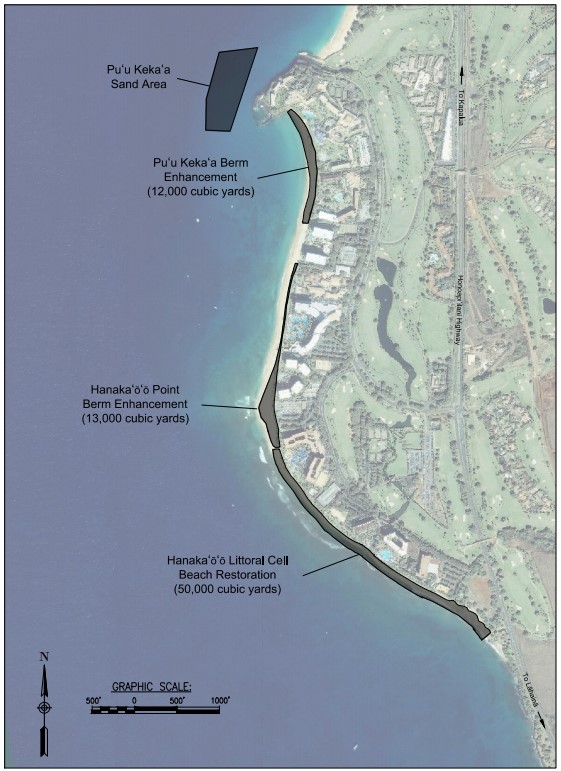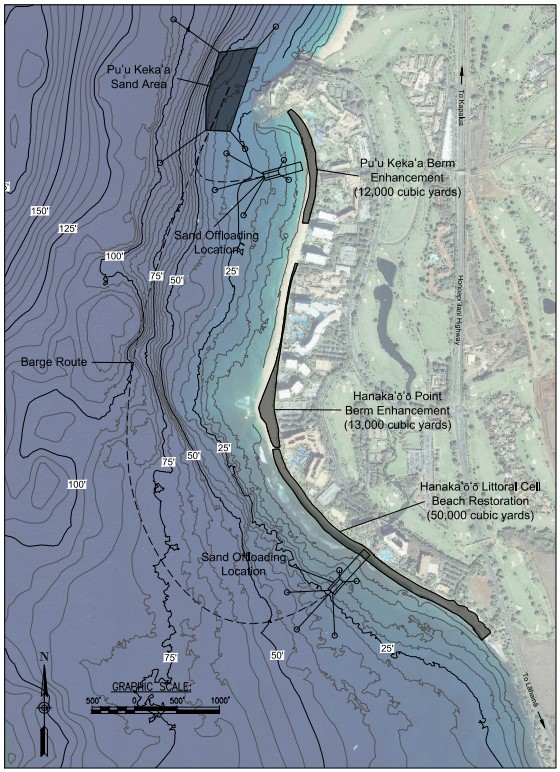Land Board Submits Kā‘anapali Beach Restoration EIS to Governor

The Board of Land and Natural Resources voted Friday to submit the Final Environmental Impact Statement for the Kāʻanapali Beach Restoration and Berm Enhancement project to Governor David Ige.
This is the next step for the project, which is proposed for a one mile stretch of beach in West Maui. It is considered a short-to-midterm effort to mitigate the impacts of rising water levels and coastal erosion, which are increasing with global sea level rise.
Staff from the DLNR Office of Conservation and Coastal Lands noted in the submittal to the board that this is not an evaluation of the project, but an evaluation of the content of the EIS.
OCCL, and its consultant Sea Engineering Inc., evaluated twelve factors to decide on the acceptability and completeness of the EIS. They hosted a half-dozen virtual outreach meetings with various stakeholders and interested people prior to the board meeting. More than a dozen people provided testimony to the board during Friday’s meeting.
The proposed project, if it clears all regulatory approvals, calls for moving sand from an 8.5- acre sand field located approximately 150-800 feet seaward of Kāʻanapali Beach, to widen the beach from 41 to 78 feet.
OCCL noted in its submittal to the land board: “Beach restoration is a specific type of environmental restoration focused on restoring coastal sandy habitat that extends across the terrestrial/marine boundary. In broad terms, environmental restoration is focused on the rejuvenation of a damaged resource, typically after the resource has been damaged due to human interactions. Modern sea level rise is a result of human induced global atmospheric and ocean warming. Changes in storm severity have also been attributed to climate change. These phenomena have been identified as accelerating coastal erosion rates in Hawaiʻi and globally.”
Four members of the board voted to accept the EIS, with one no vote and one abstaining. The EIS will now be submitted to the State Office of Environmental Quality Control for publication and transmitted to the governor with the recommendation for acceptance.
The project would require a Conservation District Use Permit which would need further board approval and would be preceded by more community outreach and another public comment period.

















